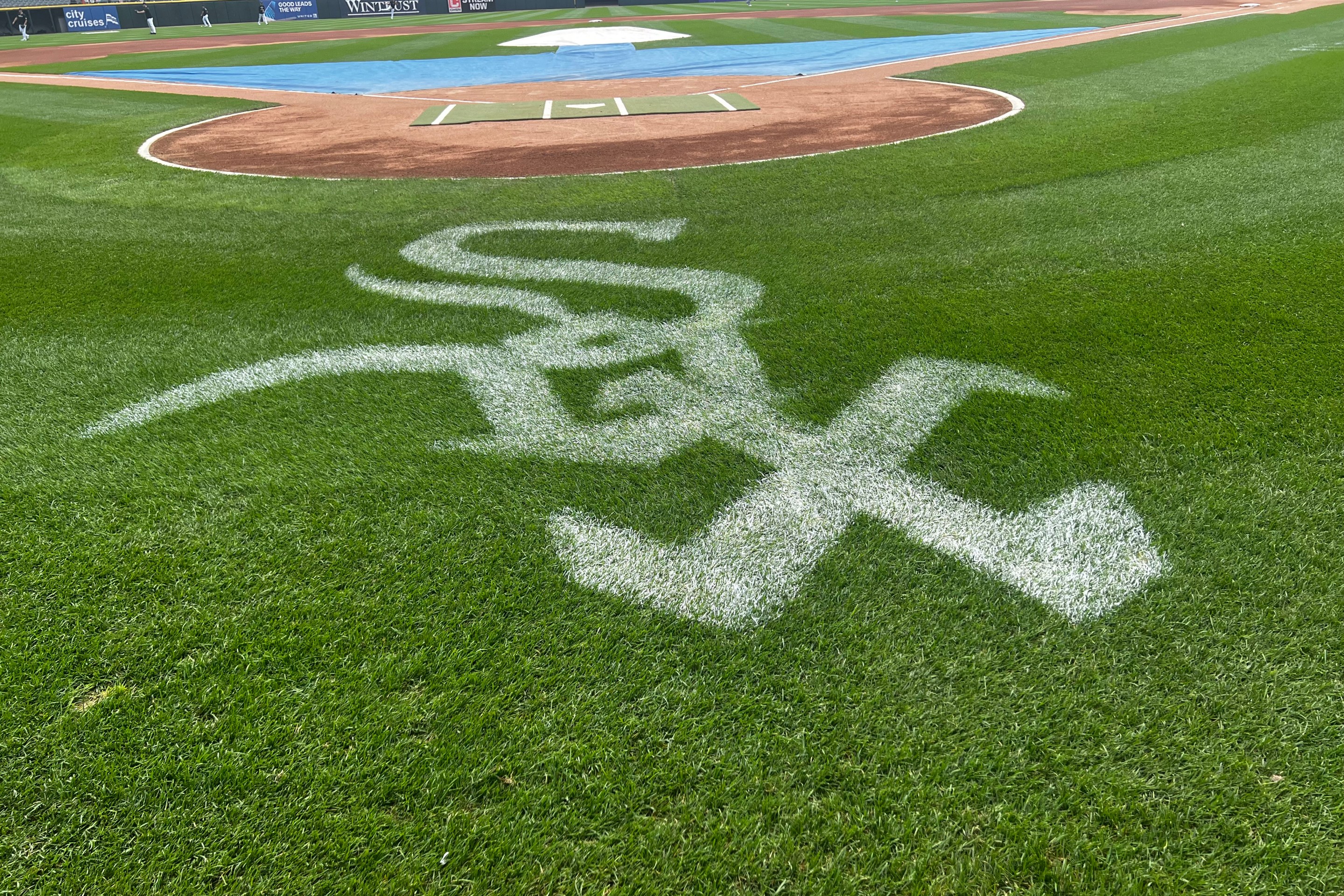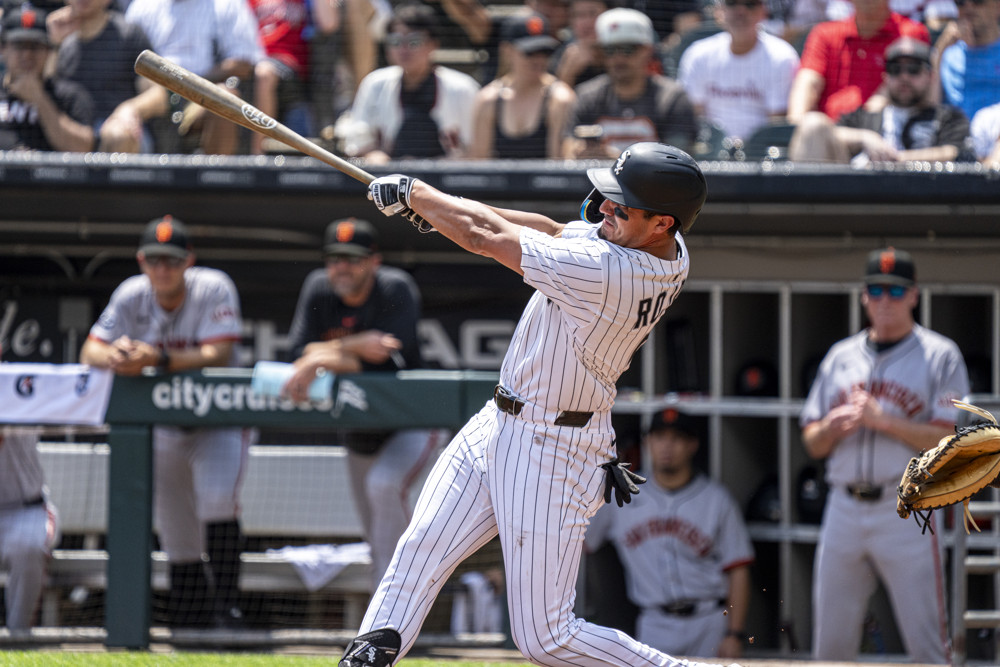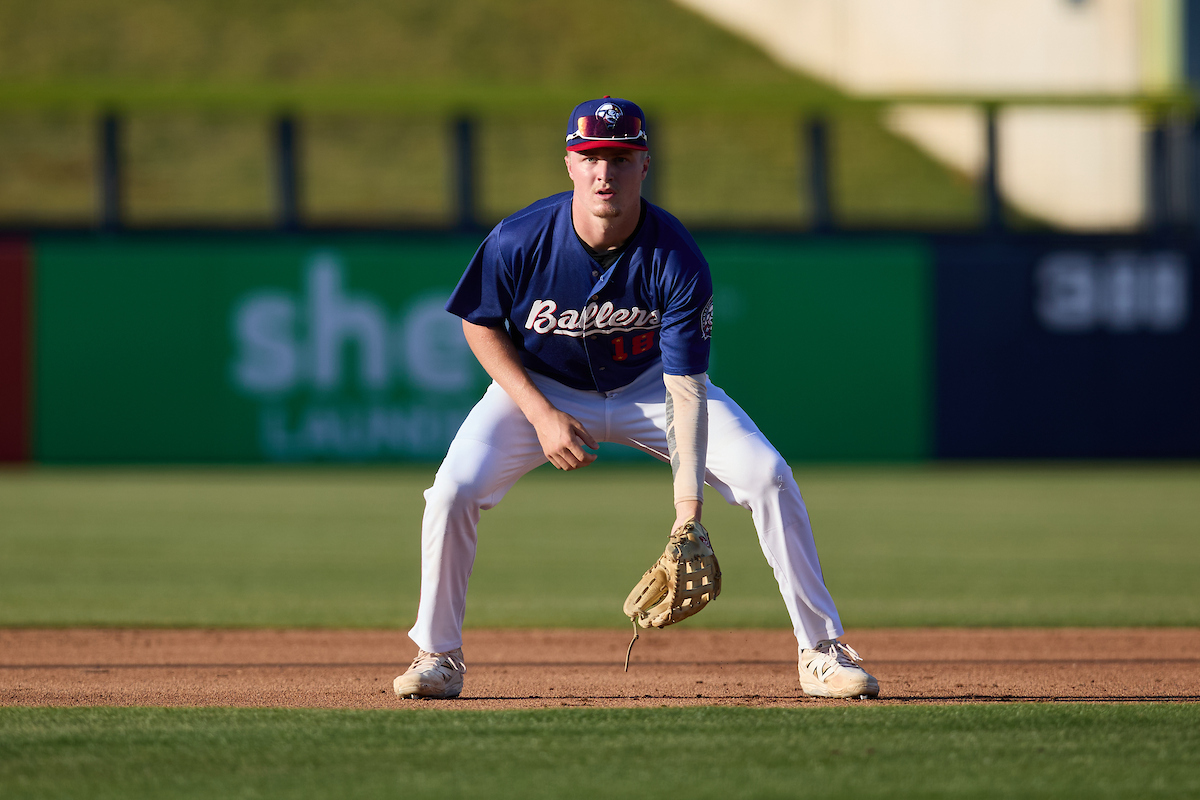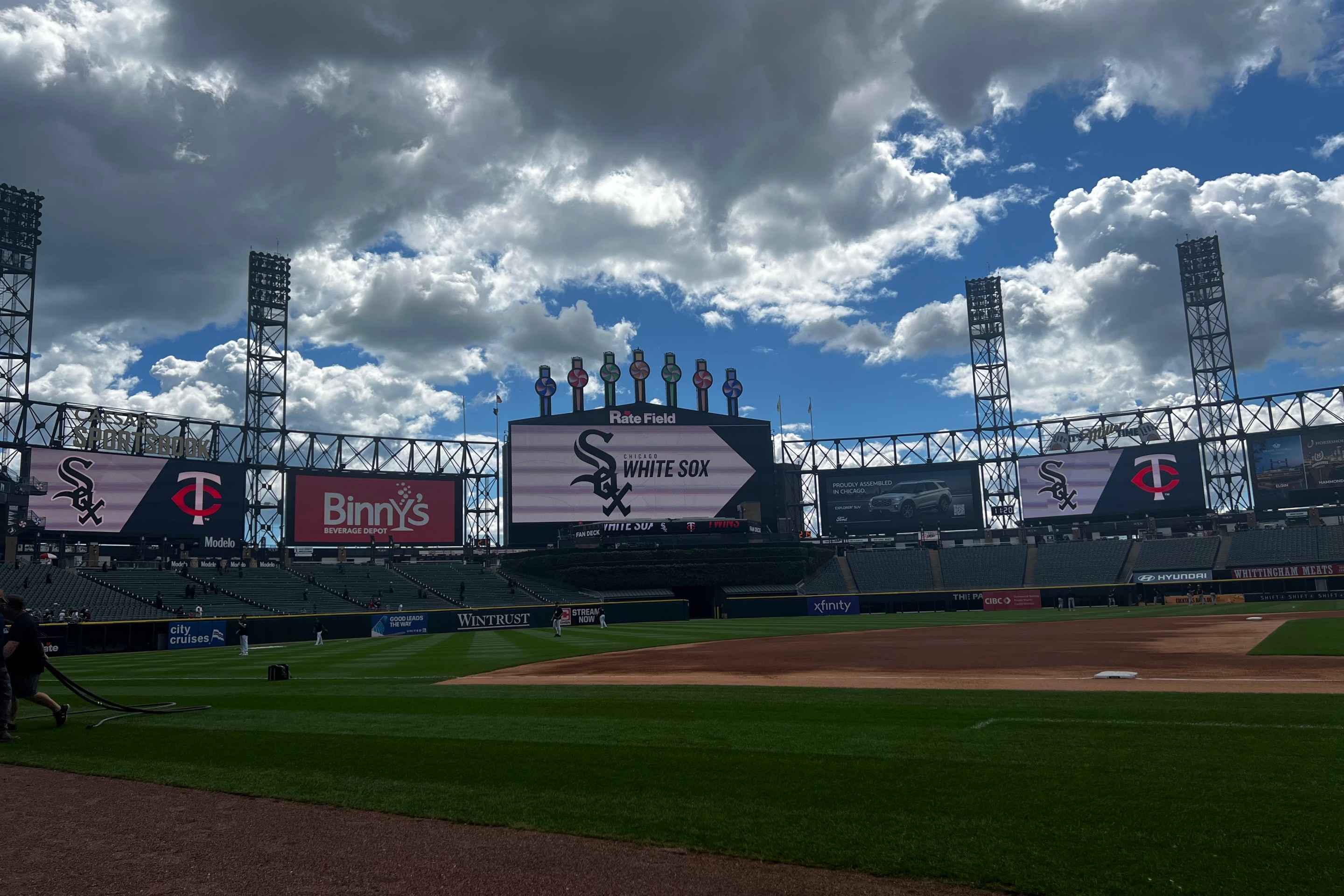When it comes to hitting, Paul DeJong is only trying to think about two things these days.
"Timing and pitch selection," DeJong said. "Those are the first two questions. If I'm missing the ball and I'm not getting my swing off or whatever, then what was timing like and what was my pitch selection? If you can't answer those in the utmost as perfect, then that's the new focus.
"[White Sox hitting coach] Marcus [Thames] and I have been working through that this year and it kind of dawned on me in the past week or so thinking, 'Why am I going to come in here and say what's wrong with my swing? Why did I miss that pitch?', when it was either a bad pitch or I was late."
After an offensive season last year that started solidly (.233/.297/.412 with 13 homers on Aug. 1) and ended gruesomely after being dealt away from the Cardinals at the deadline (.129/.128/.183), DeJong has been emphasizing getting away from over-tinkering with his mechanics since signing with the White Sox in late November.
But any mention of recent revelations is obviously relevant, because DeJong's last nine games have vaulted him from a customary slow start from someone brought in for their glove at a defense-first position, to the team's home run leader (5) and someone with a case to be moved up in the lineup on merit. DeJong is 10-for-32 (.313) in his last nine games, which is plenty nice, but extra noisy because it includes five extra-base hits and a couple of round-trippers, alongside a sharp RBI single on a thigh-high fastball and scoring the decisive run in Thursday's 3-2 victory.
"[Wednesday], he hit a homer trying to move a runner," said Pedro Grifol. "[Thursday], he hit the base hit trying to move a runner. I’ve said this since Day 1 and I’ve told them, when your intent is to play the game and play it right and to play to win, good things happen. His intent was to move the runner."
DeJong feels he's at his best when he can tune everything out and just compete and react to what pitches he's seeing, but this is the sort of run that's hard to sustain against major league pitching without a cue or two snapping into place.
"Just making sure he’s staying grounded," Thames said. "When he’s not as grounded, he comes up out of there. That’s why he chases that ball up out of the zone. We had a series against Kansas City where he was really grounded and they were trying to shoot him with heaters, and he was on time because he was more grounded. [The other] night, I thought he wasn’t in his legs as much. You've gotta be consistent with it."
With as simplified as DeJong is trying to be in his approach, it's of no surprise that this is not about the type of ground pressure measured by force plates, though the 30-year-old will bust those out for box jumps in the gym, and has the leg strength to prove it.
"The biggest movement cue when it comes to that is driving my back knee down," DeJong said while miming out flexing his back leg and digging into the ground with the ball of his foot. "As opposed to when I chase up, it's coming up. It's using the ground like he's saying to rotate into the ground versus coming up out of the ground, if that makes sense."
It makes plenty of sense watch DeJong miming it out, because you see his eye level snap up when he simulates popping up in his swing, and can infer how it could work to make fastballs at the letters look as enticing as ones at the belt.
Even in this nine-game heater, DeJong has struck out in nine of 33 plate appearances (27.2 percent), which is an elevated figure for arguably the best stretch of his young season. But it's a big improvement over when DeJong struck out in 10 of his first 14 trips to the plate in 2024. The man has some swing-and-miss in his game; you might even say it's fundamental to it.
DeJong's in-zone contact rate is the third-lowest in baseball among hitters who have more than 100 plate appearances, and both the man just above him in the rankings (Paul Goldschmidt) and just below him (Randy Arozarena) are there because they're currently embroiled in career-worst slumps. DeJong counters it with ample thump when he makes contact, as his barrel and hard-hit rates are both in the top-fourth of the majors. But with how much he whiffs in the zone, being a stickler about eliminating unnecessary chasing is how he makes his living.
"When I'm on time and early to see the ball, I won't chase as much," DeJong said, transitioning to the second part of his two-prong platform. "If I'm late, then your head is in a different position than your launch position, so by the time when you're going to say swing, you're good. But by the time you get down to the ground, it's so much up. So timing is a big thing for eliminating chase.
Colson Montgomery likes to talk about the timing of his swing as a dance, "When he goes, I go," and linking the beginning of his motion to that of the pitcher's motion as the key to seeing pitches. Montgomery turned 22 in February and is probably not originating a lot of new baseball concepts at this point in his career (and he literally said former minor leaguer Hunter Bledsoe -- who cofounded the agency that reps Montgomery -- first told him this), but DeJong evokes the same concept as his north star.
"It's locking in immediately when he starts going versus having any sort of doubt, or unsure of what I'm looking to hit, or in-between speeds, or any of those little thoughts that creep in, getting in the way of your timing. My only focus is when I'm going to start my movement, wherever it is, and then all the focus is on [the opposing pitcher]."
While DeJong's chase rate is slightly down from last season, it's actually way up during his recent hot stretch. For a small stint, it's not uncommon. Patience is often a tool to work your way to feeling as good as DeJong seems to be right now, and if all staying grounded is doing currently is keeping him on plane for the fastballs he's hitting for power, the cue is doing its job.
For someone tasked with stabilizing the White Sox up-the-middle defense and running into enough slugging to justify putting his glove in the lineup, DeJong has provided comfortably above-average range at short despite average speed. And at least for now, rather than just staving offensive decline, the pop in his .240/.283/.460 line has his overall contributions at his best wRC+ (109) since he finished second in NL Rookie of the Year voting in 2017.
Will it hold? Maybe not in a traditional sense, because it's a profile built for streakiness, and judging him during a big burst is just as risky as writing him off during a nadir. Ideally this run will go for a bit longer, and he has the cues in place to shake out of the next cold snap expeditiously. But for the Sox's concerns, a less productive version of DeJong was tradable at last year's deadline, and now they're watching an improved player who's given himself a plan to stick to for a while: timing and plate discipline.
"It's something you learn, and something you forget, and then something you re-learn and something you focus on and try to maintain," DeJong said. "You have to do it everyday. You can have a great game and then your though is 'What was I doing with my hands that day? What was I doing with this and this?' When really, the only focus was where am I looking for a ball to hit and when is he going to start?"






